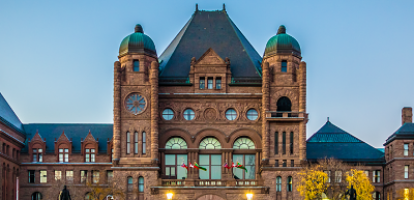From: Lori Sterling
To: Canadian Businesses and Governments
Date: June 4, 2020
Re: The Next Phase of Economic Recovery, Part One: Transitioning Pandemic-Related Relief Programs for Individuals
As we move from lockdown to a more open economy, the existing government pandemic-related programs will have to evolve. The Canada Emergency Response Benefit (CERB) achieved its goal of an immediate benefit. Those laid off, at home with children or sick relatives or were without work even before the pandemic, received government funds within days of applying. CERB is now set to expire October 3, 2020.
CERB pays $2,000 a month, and is generous by both international standards and existing Canadian standards. It is above minimum wage in virtually all provinces, and is equivalent to marginally less than $15 an hour assuming a 35-hour work week. As long as it remains in place, there will be little incentive to return to a minimum wage job. Approximately 30 percent of the workforce earns income at the minimum wage level.
One reform would be to better align CERB to local minimum wage rates so that there is an incentive to return to work. For those on the East Coast, where minimum wages are the lowest in Canada, that would mean an income drop of roughly $3 an hour for those who received CERB and are now returning to minimum wage jobs. The government could amend CERB to take into account this regional variation in wage rates.
A second reform would be to tie CERB to the extent to which the local economy is open, which is not uniform across the country. There are few cases of COVID-19 in Atlantic Canada and the Prairies, and their economies will soon be fully operational. It is, therefore, appropriate to ask whether a more regional approach to the availability of CERB would be preferable.
A further reform would be to tie CERB more closely to work income. At present, CERB is cut off when employment income reaches $1,000. A sliding scale which pro-rated CERB to work income would have several benefits. First, it would encourage previously laid off workers to look for full-time work, as they would not be penalized for earning more than $1,000. Second, it would tailor the government grant to the needs of the employee. Those with lower levels of work have a greater need for CERB than those with higher levels of work, but the need does not drop to zero at the $1,000 mark. It must be acknowledged, however, that while this proposal makes sense from a policy perspective, it may be difficult to implement given that CERB is delivered by the Canada Revenue Agency, which does not typically keep real-time data on individual monthly earnings.
Once CERB ends, the question remains what will replace it for the unemployed. Historically, the EI system has provided the social protection needed for the unemployed, but could not provide the relief needed during the pandemic. As part of the economic recovery, consideration should be given to reforming EI to make it simpler, nimbler and better able to respond to shocks in employment levels.
The federal government has also created numerous support programs for specific groups, including students, seniors, essential service workers, the homeless, parents, women in shelters or who are victims of domestic violence, and people with disabilities. Most of these group membership programs will and should end as planned. For example, the student summer work program ends naturally at the end of the summer when students return to school. The seniors benefit program is a single lump sum of up to $500 for anyone who receives OAS and/or GIS, and it, too, should not be revisited.
There are, however, two group membership income support programs that Ottawa ought to consider for an extension. One is the Canada Child Benefit (CCB), which targets low-income families with children. There has been much discussion about the disproportionate impact of the pandemic on women in the labour force, and enhancing the CCB would assist with their return to work.
Essential workers are a second group that may be in need of continued government support, in particular, those in the health and personal care sectors. Ottawa has joined with the provinces to create a wage supplement program for essential workers. As a result, most provinces now offer a wage top-up to a defined list of essential workers who earn less than $25,000 a year.
The federal supplement for essential workers should extend into the fall. There are two reasons for this recommendation. One relates to the fact that even as the economy recovers, these workers continue to work in high-risk settings. A second rationale is tied to the historic under-valuation of these traditionally female-dominated jobs. This subsidy indirectly goes some way toward remedying pre-existing pay equity concerns.
The existing individual income support programs were emergency measures created for unprecedented times. They were not intended to be permanent income support, nor is their original design carved in stone. These programs should, therefore, be continually re-assessed in light of COVID-19 incidence data, the nature of our economic recovery and individual circumstances. In a companion Intelligence Memo we assess supports for business.
Lori Sterling, a former federal deputy minister of labour, is senior counsel at Bennett Jones.
To send a comment or leave feedback, email us at blog@cdhowe.org.
The views expressed here are those of the author. The C.D. Howe Institute does not take corporate positions on policy matters.





